
Toast POS
$69.00
- Purpose-built for restaurants
- Seamless kitchen integration
- Real-time reporting
- Tableside ordering
- Online ordering sync
- Toast payments only
- Proprietary hardware required
- Long-term contracts required
- Additional costs accumulate
Toast POS Review 2025: Features, Pricing, and Pros & Cons
Updated as of: September, 2025 • ⏱️ Estimated Read Time: 15 minutes
Toast POS is built specifically for restaurants and shows it — from kitchen display screens to tableside ordering, it handles the complexity of food service better than most. The downside? You’re locked into their hardware ecosystem and payment processing. Starting at $0/month with free hardware (higher processing fees) or $69/month with lower rates, it delivers solid value for full-service restaurants that can benefit from its specialized features.
👉 Compare Toast POS and Find the Best Restaurant POS
For a limited time, get a free starter kit hardware bundle and up to 60% off Toast restaurant POS. Check out the latest Toast Discount Promotion.
I’ll be honest — I went into testing Toast POS with some skepticism. There are plenty of “restaurant-focused” POS systems out there that feel more like generic platforms with a few food service features bolted on. Toast? It’s different.
After spending time with the system across different restaurant scenarios — from quick-service to full dining — it’s clear this platform was designed by people who actually understand how restaurants operate. The order flow makes sense, the kitchen integration works without drama, and staff picked it up faster than I expected. That said, it’s not without its quirks, and the pricing structure definitely isn’t for everyone. Keep reading below as we break it all down for you.
Table of Contents
- 1 Quick Specs
- 2 🎥 Our Toast POS Video Review
- 3 Overview
- 4 Pros & Cons of Toast POS
- 5 Toast Pricing & Payment Processing
- 6 Toast vs Other POS Systems
- 7 Ease of Use
- 8 Hardware & Setup
- 9 Key Integrations
- 10 Core Features Deep Dive
- 11 Customer Support & Training
- 12 Security & Compliance
- 13 Who Should Use This?
- 14 Real-World Success Stories
- 15 User Reviews
- 16 FAQ
- 17 Final Verdict
Quick Specs
| Feature | Toast POS |
|---|---|
| Best For | Full-Service Restaurants, Quick Service, Bars |
| Starting Price | $0/month (free starter kit for 1-2 terminals available) |
| Hardware Bundle | From $799 upfront |
| Free Trial | Demo available (contact required) |
| Payment Processor | Toast Payments only |
| Multi-Location Support | Yes |
| Online Ordering | Yes (integrated) |
| Kitchen Display System | Yes (additional cost) |
| Contract Required | Typically 3-5 years |
🎥 Our Toast POS Video Review
This comprehensive video review covers everything you need to know about Toast POS in just over 6 minutes. We break down the platform’s core features, pricing structure, and real-world performance to help you make an informed decision.
Overview
If you’re shopping for a restaurant POS that won’t make you compromise on the features that actually matter, Toast deserves your attention. Founded in 2011 and now powering over 120,000 restaurant locations, this isn’t just another generic POS with restaurant features tacked on.
What sets Toast apart is how well it handles the restaurant-specific workflows that generic systems struggle with. Order modifications, kitchen timing, split checks, and complex menu variations all work smoothly without workarounds or third-party apps.
Top Features at a Glance
- Kitchen Display System: Orders flow directly to kitchen screens with timing indicators and prep instructions — no more lost tickets or miscommunication
- Tableside Ordering: Servers can take orders and process payments right at the table using handheld devices
- Menu Engineering: Built-in analytics show which items are profitable and popular, helping optimize your menu
- Online Ordering Integration: Your online menu stays synced with in-house ordering — no separate systems to manage
- Toast Delivery Services: Partnership with DoorDash means you don’t need your own delivery fleet
- Staff Management: Clock in/out, scheduling, and payroll integration all happen within the same platform
- Real-Time Reporting: Sales data, labor costs, and inventory updates sync instantly across all locations
- Gift Cards & Loyalty: Built-in customer retention tools without needing separate apps
Pros & Cons of Toast POS
- Purpose-built for restaurants with deep industry features
- Kitchen display integration works seamlessly
- Tableside ordering speeds up service significantly
- Real-time reporting and analytics are comprehensive
- Online ordering syncs perfectly with in-house system
- Staff management tools are restaurant-focused
- Must use Toast’s payment processing (no alternatives)
- Hardware ecosystem is proprietary and expensive
- Support response times can be inconsistent during peak periods
- Limited offline functionality compared to competitors
- Long-term contracts with early termination fees
- Additional costs add up quickly (KDS, handheld devices, etc.)
Toast Pricing & Payment Processing
Toast offers two pricing models depending on whether you want to pay upfront for hardware or get it free with higher processing rates:
Pay-as-you-Go Pricing (Free Hardware):
- Basic: $0/month + 3.09% + 15¢ per transaction
- Core: $0/month + 3.39% + 15¢ per transaction
- Growth: $0/month + 3.69% + 15¢ per transaction
Traditional Pricing (Hardware Purchase):
- Basic: $69/month + 2.49% + 15¢ per transaction
- Core: $219/month + 2.49% + 15¢ per transaction
- Growth: $578/month + 2.49% + 15¢ per transaction
Pricing Breakdown
| Plan | Pay-as-you-Go | Traditional Pricing | Best For |
|---|---|---|---|
| Basic | $0/mo + 3.09% + 15¢ | $69/mo + 2.49% + 15¢ | Payment processing, 24/7 support, basic reporting |
| Core | $0/mo + 3.39% + 15¢ | $219/mo + 2.49% + 15¢ | Online ordering, delivery integrations, all Basic features |
| Growth | $0/mo + 3.69% + 15¢ | $578/mo + 2.49% + 15¢ | Gift cards, loyalty, marketing, catering, all Core features |
Payment Processing
Here’s where Toast gets controversial. You must use Toast Payments — there’s no option to bring your own processor. This bundled approach has pros and cons.
Processing rates depend on which pricing model you choose:
- Traditional Pricing: 2.49% + 15¢ (after purchasing hardware)
- Pay-as-you-Go: 3.09% – 3.69% + 15¢ (with free hardware)
With the pay-as-you-go pricing, you’ll pay higher processing rates in exchange for free hardware upfront. This can be beneficial for new restaurants with limited capital, but may cost more long-term for high-volume operations.
The rates are competitive for restaurant processing, and the integration is seamless. Payment disputes, chargebacks, and reporting all happen within the Toast system. The choice between pay-as-you-go and traditional pricing gives restaurants flexibility based on their cash flow preferences and transaction volume.
Toast vs Other POS Systems
Here’s how Toast stacks up against major competitors in the restaurant space:
| Feature | Toast | TouchBistro | Square | Clover |
|---|---|---|---|---|
| Best For | Full-Service Restaurants | iPad-Based Restaurants | Small Cafes | Quick Service |
| Starting Monthly Cost | $69 | $69 | $60 | $44.95 |
| Payment Processor | Toast only | Multiple options | Square only | Multiple options |
| Kitchen Display | Yes (extra cost) | Yes (included) | Basic only | Yes |
| Free Trial | Demo only | 30 days | Yes | Varies |
Toast: Comprehensive restaurant features but locks you into their ecosystem. Great for established restaurants willing to pay for specialization.
TouchBistro: iPad-based with solid restaurant features and more payment processor flexibility. Good middle ground.
Square: Easy to start with and cost-effective for small operations, but limited restaurant-specific features. Square for Restaurants offers more robust functionality like menu management and kitchen display systems, though it still lacks the depth of purpose-built restaurant platforms like Toast.
Clover: Good for quick service with flexible hardware options, though not as restaurant-focused as Toast.
Ease of Use
Toast strikes a good balance between powerful features and usability. The interface follows restaurant workflow naturally — taking orders feels intuitive, and modifying items doesn’t require hunting through multiple screens. New staff typically pick up the basics within a shift or two.
The setup process is more involved than plug-and-play systems, but Toast provides dedicated onboarding support. Menu programming takes some time initially, especially for complex restaurants with lots of modifications, but the effort pays off in smoother daily operations.
One area where Toast shines is consistency. The system works the same way whether you’re at the POS terminal, using a handheld device, or checking reports on your phone. This consistency reduces training time and staff confusion.
Hardware & Setup
This is where Toast differs significantly from competitors. You’re buying into their hardware ecosystem — no bringing your own tablets or mixing and matching components.
The hardware quality is solid. Toast terminals are purpose-built for restaurant environments — they handle spills, heat, and constant use better than consumer tablets. The integrated payment processing means fewer cables and connection points that can fail.
What’s included in typical bundles:
- Toast terminal (Android-based)
- Receipt printer
- Cash drawer
- Payment processing device
- Kitchen display screens (additional cost)
- Handheld devices for tableside service (additional cost)
The downside is cost and flexibility. You can’t use existing hardware, and replacement parts must come from Toast. If you’re already invested in iPad-based systems, switching means replacing everything.
Key Integrations
Toast takes a different approach to integrations than most POS systems. Instead of connecting to hundreds of third-party apps, they’ve built most functionality directly into their platform or partnered with select providers.
Key integrations include:
- Accounting: QuickBooks, Xero
- Delivery: DoorDash (through Toast Delivery Services)
- Payroll: Toast Payroll (built-in), Paychex, ADP
- Inventory: Several restaurant-specific inventory management systems
- Marketing: Mailchimp, Toast Email Marketing
- Reservations: OpenTable, Resy
The integration list is shorter than platforms like Square or Clover, but the integrations available tend to be deeper and more restaurant-focused. Toast prefers to build features in-house rather than rely on third-party connections.
Core Features Deep Dive
Toast Kitchen Display System (KDS)
The KDS is where Toast really shows its restaurant DNA. Orders appear on kitchen screens with timing indicators, prep instructions, and modification details. Cooks can mark items as started or finished, and the system adjusts timing estimates automatically.
During busy periods, the KDS helps kitchen staff prioritize orders and coordinate timing so all items for a table come up together. It’s not just a digital version of paper tickets — it’s a workflow management tool.
The downside? It’s an additional monthly cost on top of your POS subscription. For many restaurants, it’s worth the expense, but it does add to the total system cost.
Menu Engineering & Analytics
Toast’s reporting goes beyond basic sales data. The menu engineering reports show which items are profitable, popular, or both. You can identify dishes that sell well but have thin margins, or profitable items that customers aren’t ordering.
The analytics help with menu optimization, pricing decisions, and inventory planning. For restaurants serious about controlling food costs, these insights can pay for the system cost several times over.
Toast Online Ordering Integration
Unlike bolt-on online ordering systems, Toast’s online ordering stays perfectly synced with your POS. Menu changes, pricing updates, and availability all update in real-time across all channels.
The QR code ordering feature gained popularity during COVID and remains useful for reducing labor costs. Customers can order and pay from their phones while seated, reducing server workload during busy periods.
Staff Management Tools
Toast includes time clock functionality, scheduling tools, and basic payroll features. Managers can track labor costs in real-time and get alerts when approaching budget thresholds.
The staff performance analytics show server sales averages, table turn times, and other metrics useful for coaching and scheduling decisions. It’s not as comprehensive as dedicated restaurant management systems, but it covers the essentials.
Toast Go – Mobile Ordering & Payments
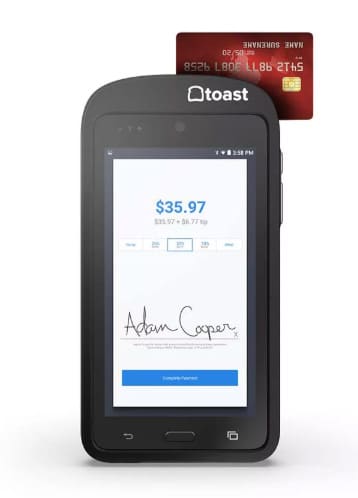
You can accept payments at the table with the Toast Go Handheld device.
Toast Go is a handheld device that transforms how restaurants handle tableside service and mobile ordering. Staff can take orders, process payments, and manage customer interactions directly from the table without returning to a fixed terminal.
The device integrates seamlessly with Toast’s kitchen display system, so orders placed on Toast Go immediately appear in the kitchen with the same timing and preparation instructions as counter orders. This eliminates the delay and potential errors that come with writing orders down and entering them later.
For customer-facing use, Toast Go enables QR code ordering where diners can scan a code at their table, browse the menu on their phone, place orders, and pay—all without waiting for server attention.
This reduces labor costs while often increasing order sizes since customers can browse at their own pace. Toast Go also handles split payments, tip adjustments, and receipt delivery via text or email, making it particularly valuable for busy restaurants where speed and accuracy matter most.
Customer Support & Training
Toast provides dedicated onboarding support during setup, which helps given the system’s complexity. The training materials are comprehensive, and most staff can learn the basics within a few shifts.
Like many rapidly growing SaaS companies serving over 120,000 locations, Toast’s customer support team can sometimes be stretched thin during peak restaurant hours. While some users report longer wait times during busy periods, Toast has been investing in expanding their support team and offers comprehensive self-service resources through their help center.
Support channels include:
- Phone support (response times vary by time of day)
- Email support
- Extensive online help center with video tutorials
- Live chat (available during business hours)
Most operational issues can be resolved through their self-service resources, and the system’s overall reliability means restaurants typically don’t need frequent support once properly set up.
Security & Compliance
Toast meets PCI DSS Level 1 compliance requirements and uses end-to-end encryption for payment processing. The system includes user access controls and role-based permissions to limit staff access to sensitive functions.
Data is stored in secure cloud servers with regular backups and disaster recovery protocols. The integrated payment processing reduces PCI compliance burden since sensitive data doesn’t pass through multiple systems.
Who Should Use This?
✅ Ideal for:
- Full-service restaurants with complex menus and table service
- Quick-service restaurants focused on speed and order accuracy
- Bars and breweries that need inventory tracking and staff management
- Multi-location restaurant groups requiring centralized oversight
- Establishments prioritizing kitchen efficiency and order flow management
❌ Not recommended for:
- Non-restaurant businesses that need general retail or service functionality
- Businesses requiring third-party payment processors for better rates or existing relationships
- Operations needing extensive third-party integrations not available in Toast’s ecosystem
- Restaurants that prefer hardware flexibility and want to use their own tablets or equipment
Real-World Success Stories
HOUSEpitality Restaurant Group – Revenue Optimization
HOUSEpitality Restaurant Group increased its bottom line by 7-10% using Toast Mobile Order & Pay™ and expects to generate an incremental $2.5 million per year across all eight locations when at full capacity.
The pay-at-the-table technology enhanced service speed and customer experience while dramatically improving staff efficiency. Toast allowed them to raise staff pay by 25-30% while reducing floor staff from 16 servers to just 6, increasing individual earnings through higher table turnover.
Overall, Toast POS allowed HOUSEpitality to:
- Enhance Guest Experience: Positive feedback from guests on the new dining experience
- Increase Staff Earnings: Staff making more money per shift
- Achieve Sustained Profitability: The new model increased profitability despite reduced sales during the pandemic
Maman Bakery – Multi-Location Expansion
Maman Bakery expanded from a single location to 30 across various cities while maintaining quality and culture by integrating Toast POS into their operations.
Toast’s ease of setup and staff training enabled rapid growth, while robust reporting helped optimize store hours and table turn times. The system’s versatility allows seamless switching between counter service on weekdays and table service on weekends.
Toast POS provided Maman with the following benefits:
- Ease of Expansion: Simplified menu setup and staff training, enabling rapid growth
- Data and Reporting: Detailed insights into operations for better decision-making
- Service Versatility: Efficiently handles both counter and table service with innovative POS devices
User Reviews
I looked through recent reviews on G2, Capterra, and Trustpilot to get a sense of actual user experiences. Toast has a generally positive reputation, but some clear patterns emerge in both positive and negative feedback.
What Users Say
| Pros | Cons |
|---|---|
| “Kitchen display system is game-changer” | “Support wait times can be longer than expected” |
| “Staff training was surprisingly easy” | “Forced to use their payment processing” |
| “Real-time reporting helps manage costs” | “Hardware costs pile up quickly” |
| “Handles complex orders without issues” | “Long-term contract feels restrictive” |
| “Online ordering integration is seamless” | “Limited offline functionality” |
| “Tableside ordering increased our tips” | “Setup process took longer than expected” |
Support experiences can vary, though the system’s overall reliability and comprehensive training resources mean most restaurants operate smoothly once the initial setup and training period is complete.
FAQ
Can I use my own payment processor with Toast?
No, Toast requires you to use their payment processing service. Current rates start are 2.49% + 15¢ per transaction for most card types. This is one of the most common complaints about the system, as it eliminates the ability to negotiate better rates with other processors.
Can I bring my own hardware to Toast?
No, Toast uses proprietary hardware that you must purchase or lease from them. This includes terminals, payment devices, and kitchen display screens. You cannot use iPads or other third-party hardware with the Toast system.
Does Toast work offline?
Toast has limited offline functionality. You can continue taking orders and processing payments if your internet goes down, but features like real-time reporting, online ordering, and some integrations require an internet connection.
What's included in Toast's monthly pricing?
The base monthly fee covers the core POS software, basic reporting, and payment processing integration. Additional features like kitchen display systems, handheld devices, advanced analytics, and loyalty programs typically cost extra.
How long are Toast's contracts?
Toast typically requires 3-5 year contracts, especially if you’re financing hardware. Early termination fees may apply if you cancel before the contract ends. Some month-to-month options may be available at higher rates.
How do I access my Toast account?
Current Toast customers can log into their accounts through the Toast login page. You’ll need your restaurant credentials provided during setup.
Final Verdict
Toast POS delivers on its promise to be a comprehensive restaurant management system, but it comes with trade-offs that won’t work for every operation. The kitchen integration, tableside ordering, and restaurant-specific features justify the cost for many full-service restaurants. However, the proprietary hardware requirement and mandatory payment processing are considerations to factor into your decision.
If you’re running a restaurant that can benefit from Toast’s specialized features and can absorb the monthly costs, it’s one of the better options available. Just make sure you understand the total cost of ownership and take advantage of their comprehensive training resources during setup.
For smaller operations or businesses needing more flexibility in payment processing and hardware choices, you might find better value elsewhere.
Related Resources
- Compare POS Systems
- Best POS Systems for Restaurants
- Best POS Systems for Small Business
- Best POS Systems for Bars

POS systems expert and founder of POSUSA.com, a trusted industry resource since 2011. With over a decade of hands-on experience testing and reviewing point-of-sale systems, he helps business owners choose solutions that actually fit their needs.
Specification: Toast POS
|
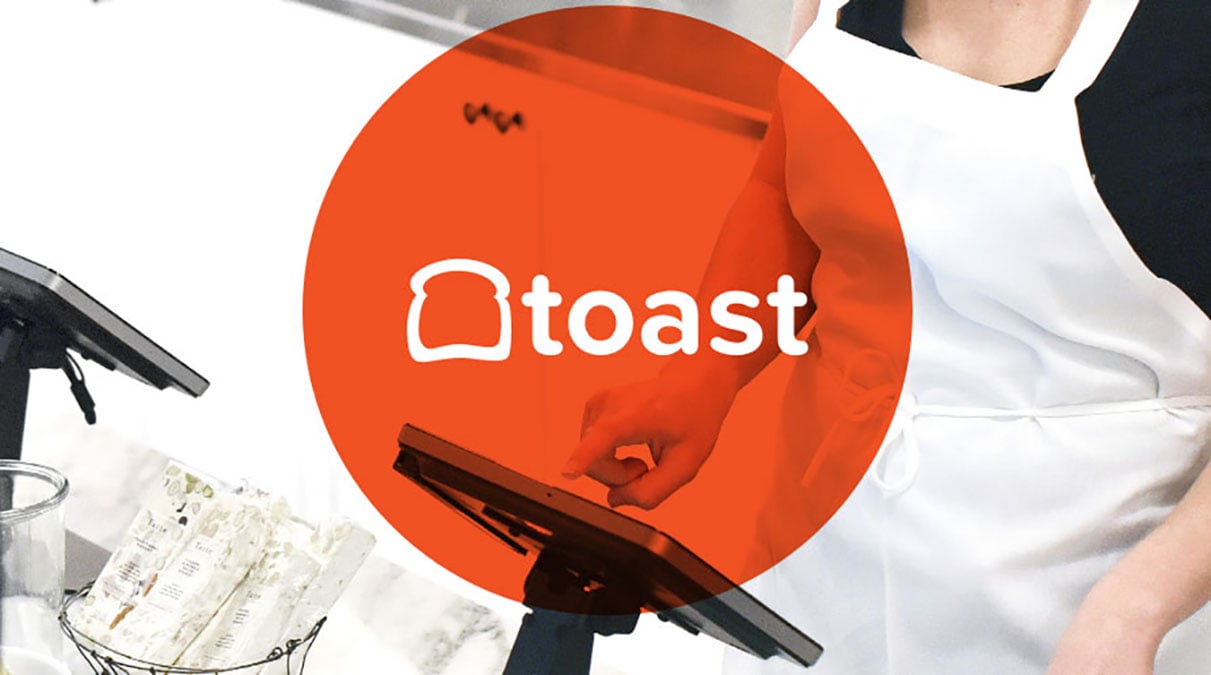



















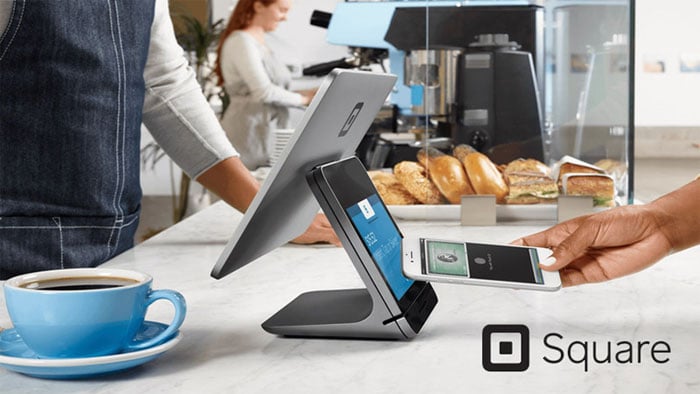




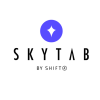

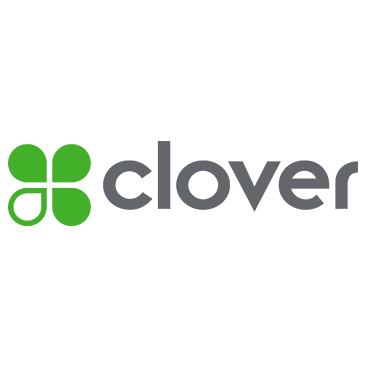









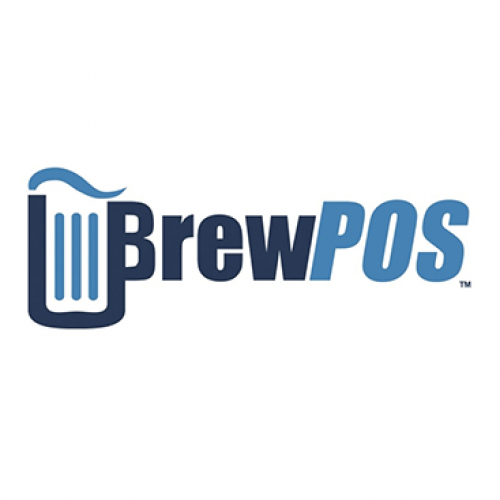



JAMES David BROWN –
As a long time Executive Chef I have used my share of POS systems. Toast is hands down the easiest and user friendly. Training time cut way down. Their long list of integration partners and payroll system makes it a true all in one platform. I highly recommend any business to at the very least look into it. You will be impressed.
Laurie –
We have used Toast for approximately 6 months. Hardware breaks continually, credit card readers disconnect numerous times each day, which requires a complete reboot of the system. Support on the weekends requires a 40+ minute wait on the phone. Our IT person is completely exasperated. There are never any solutions offered for our issues. I will give Toast another 6 months to get it together before we jump ship.
Andrew Briere –
I haven’t experienced their “great customer service” yet. My sales rep is VERY bad at communicating via email. This has been a stressful experience thus far and all I have to show for it is my deposit taken out of my bank account and absolutely NO idea when we can expect to see the equipment. I’ve tried calling customer service several times but it’s always a twenty minute or better wait…. we picked toast because we heard such great things, wow am I disappointed!!!
Chris –
I cannot speak to others reviews here saying hardware is breaking and credit card readers not working, to each their own experience I guess, but from our experience, Toast has been nothing short of amazing switching from Square.
We chose Square as it was cheap and low cost and got the job done, but we quickly outgrew it. Shopped around and ended up talking to a Toast rep in our area (Albuquerque, NM) they gave us a virtual demo and talked us through everything from what made their hardware different to the software that would help us drive revenue (email marketing, loyalty etc.) A huge selling point to us was the ability to use DoorDash but not pay commissions on delivery orders which used to really cut into our online ordering revenue.
We have had toast for about a year now and it has been wonderful, really simple to teach new staff, we use their handhelds which are AWESOME, really sleek design and fit right in our servers pockets. No substantial issues with credit card reader, we had one handheld freeze up once but a 10 minute call with their customer service fixed it right away. I’ve only called them a handful of times since we opened, and have never waited more than 5 minutes to reach an actual person for help.
All in all i’d give Toast 4/5 stars for the system but ranked them here 5/5 because our sales rep we worked with took our budget we gave him and got us to a number that fit what we could afford. I really recommend going through your local sales rep, in my experience they have more ability to help on discounting.
All in all very positive experience, a few places around us have Toast too and i can’t say i’ve heard any complaints from them either. Would highly recommend to any mom/pop shop opening up a first location or anyone needing an upgrade.
Good luck with your search!
Mark Delaney –
We’ve been using Toast for over a year now, and it’s been a complete game-changer for our business. The system is incredibly intuitive — training new staff takes a fraction of the time it used to. Online ordering, tableside payments, and real-time reporting have made daily operations smoother and more efficient. The handhelds are durable and work great in a busy environment, and the menu management tools are easy to update on the fly.
Overall, Toast POS has made running our restaurant faster, easier, and more profitable. I highly recommend it to any restaurant looking to modernize operations and improve the customer experience.